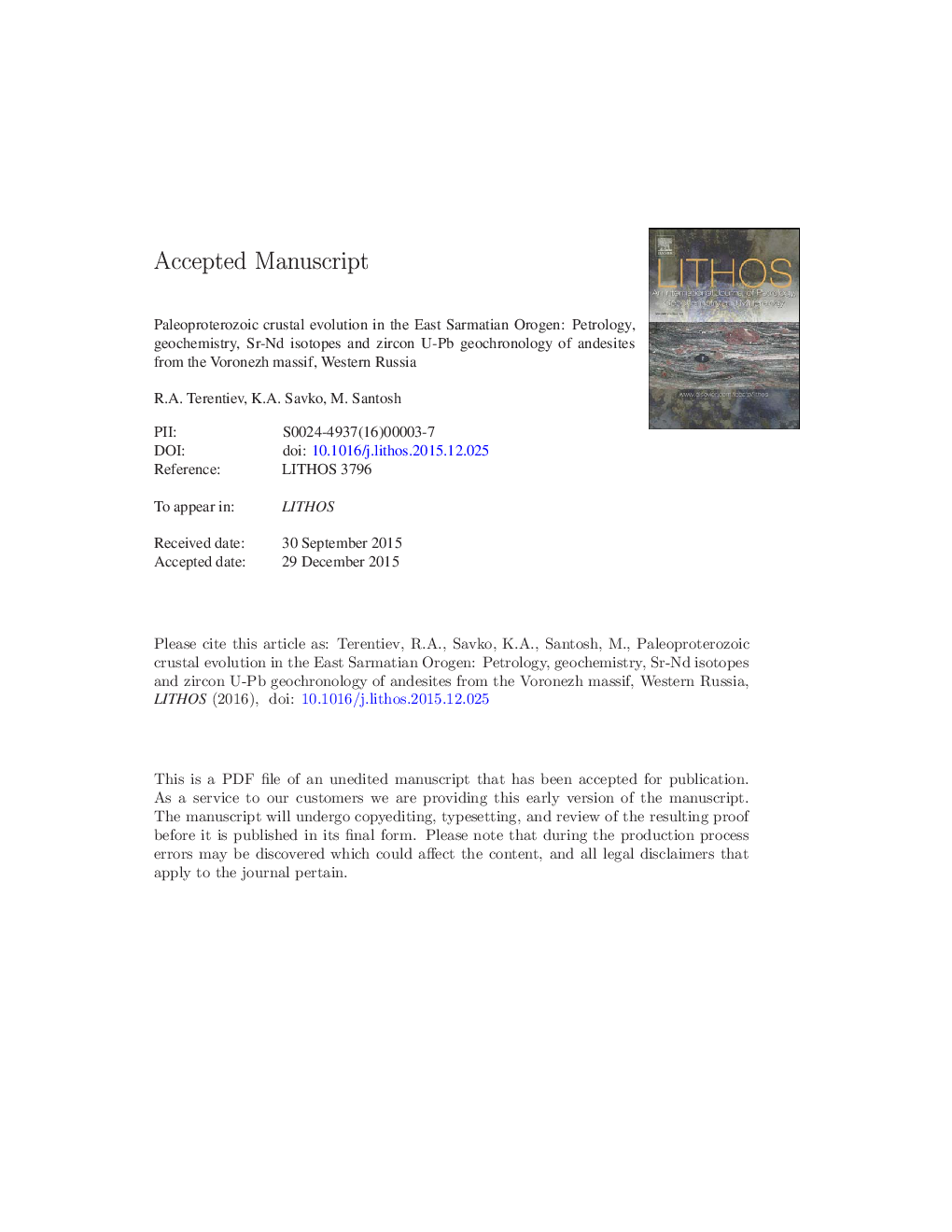| Article ID | Journal | Published Year | Pages | File Type |
|---|---|---|---|---|
| 6440587 | Lithos | 2016 | 70 Pages |
Abstract
Andesites and related plutonic rocks are major contributors to continental growth and provide insights into the interaction between the mantle and crust. Paleoproterozoic volcanic rocks are important components of the East Sarmatian Orogen (ESO) belonging to the East European Craton, although their petrogenesis and tectonic setting remain controversial. Here we present petrology, mineral chemistry, bulk chemistry, Sr-Nd isotopes, and zircon U-Pb geochronological data from andesites and related rocks in the Losevo and Vorontsovka blocks of the ESO. Clinopyroxene phenocrysts in the andesites are depleted in LREE, and enriched in HFSE (Th, Nb, Zr, Hf, Ti) and LILE (Ba, Sr). Based on the chemistry of pyroxenes and whole rocks, as well as Fe-Ti oxides, we estimate a temperature range of 1179 to 1262 °С, pressures of 11.3 to 13.0 kbar, H2O content of 1-5 wt.%, and oxygen fu gacity close to the MH buffer for the melts of the Kalach graben (KG) and the Baygora area (BA) andesites. Our zircon U-Pb geochronological data indicate new zircon growth during the middle Paleoproterozoic as displayed by weighted mean 207Pb/206Pb ages of 2047 ± 17 Ma and 2040 ± 16 Ma for andesite and dacite-porphyry of the BA, and 2050 ± 16 Ma from high-Mg basaltic andesite of the KG. The andesites and related rocks of the KG and BA are characterized by high magnesium contents (Mg # up to 0.68). All these volcanic rocks are depleted in LREE and HFSE, and display negative Nb and Ti anomalies relative to primitive mantle. The high-Mg bulk composition, and the presence of clinopyroxene phenocrysts suggests that the parent melts of the KG and BA suite were in equilibrium with the mantle rocks. The rocks show positive εNd(T) values and low initial 87Sr/86Sr, suggesting that the magmas were mostly derived from metasomatized mantle source. The geochemical differences between the two andesite types are attributed to: the predominance of fractional crystallization, and minor role of contamination in the case of KG andesites in contrast to the higher degree of contamination with continental crustal lithologies and/or dacitic melts for the BA andesites. Furthermore, the upper mantle source of the KG andesites is inferred to be metasomatically enriched in comparison with the hydrous mantle source of the BA magmas. We propose post-collisional setting for both the high-Mg andesites of the KG and normal andesites of the BA, with magma generation through partial melting of enriched mantle sources.
Related Topics
Physical Sciences and Engineering
Earth and Planetary Sciences
Geochemistry and Petrology
Authors
R.A. Terentiev, K.A. Savko, M. Santosh,
